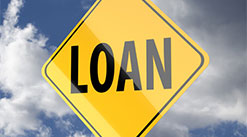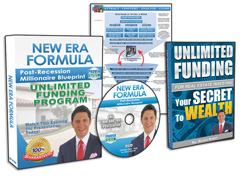
 For real estate investor sellers selling single family residences, or investors considering their refinancing options, understanding borrower loan options is always helpful. If a prospective buyer presents an offer to an investor seller, almost always something other than a straight cash offer, it is certainly good business to understand their expected source of financing.
For real estate investor sellers selling single family residences, or investors considering their refinancing options, understanding borrower loan options is always helpful. If a prospective buyer presents an offer to an investor seller, almost always something other than a straight cash offer, it is certainly good business to understand their expected source of financing.
Of course, there are conventional bank loans, ideal for borrowers with good to excellent credit. Most buyers you will encounter will not. A conventional mortgage refers to a loan that is not insured or guaranteed by the federal government. Those conventional or conforming mortgages adhere to the federal guidelines set by Fannie Mae or Freddie Mac and can be offered by almost any mortgage company, bank, broker, or credit union. They include conforming and non-conforming loans, jumbo loans, portfolio loans, even subprime loans. Half of all conventional loans are conventional conforming loans as they conform to established Fannie Mae or Freddie Mac guidelines. These two government sponsored enterprises (GSE), by far the two largest investors of conventional loans, buy mortgages from lenders then sell them to investors on the secondary market. In theory, their purpose is to make mortgages widely available. In practice, they caused a grave housing crisis. Loans that do not conform to the GSE guidelines are deemed non-conforming, often referred to as jumbo loans. Conventional loans held by mortgage lenders on their own books or portfolio are portfolio loans. Lenders here can set their own guidelines and are not sold on the secondary market or to investors. They do offer features other mortgages do not. Subprime loans are loans marketed to borrowers at high interest rates and fees to compensate for low credit scores and more risk.
There are two basic types of conventional loans, fixed rate loans where the rate never changes over the life of the loan, and the adjustable rate mortgage (ARM) where after an initial fixed rate period at the outset, the interest rate adjusts upward or downward, and is an option to save money on the front end if your game plan is to refinance within the first 5-10 years.
For those eligible for a conventional loan, the standard down payment typically required is 20% of the purchase price. Other factors considered to qualify for such a loan include the borrowers monthly mortgage payments and monthly non-mortgage debts, which must fall within a certain range. The borrower’s credit score is also factored in. Fannie Mae and Freddie Mac guidelines include a minimum FICO score of 620, the loan amount cannot exceed $417,000.00 on a single-family home, and the borrowers must have a debt to income ratio (DTI) that does not exceed 36%. The DTI represents the aggregate amount of the monthly mortgage payments and all other debts in comparison to a person’s monthly gross income.
Then there are the non-conventional loans that are secured by the federal government. These are loans that are backed by the government and offer more flexible products for borrowers who are not otherwise eligible for conventional loans or at least, not as favorably.
The two most common non-conventional loans are the FHA and VA loans. An FHA loan has less onerous qualifications and credit requirements than a conventional loan. They are for borrowers whose house payment will constitute a bulk of their monthly take home pay, have low credit scores, allow for a DTI as high as 57% with a minimum down payment of 3.5% of the purchase price, and a FICO score below 600. The FHA does not lend money. It insures mortgages and does so as it requires borrowers to pay monthly mortgage insurance premiums higher than the more typical private mortgage insurance.
VA loans allow veterans, active duty military, reservists, and national guard members to purchase their primary residence with no money down. The VA does not lend money but guarantees loans made by private lenders. The VA charges a funding fee from 1.25%-3.3% of the loan. There is 100% financing and veterans do not have to be first time buyers and may reuse their benefit. Borrowers may need to pay the closing costs and provide their own down payment even if they get 100% financing otherwise. There are limits on loan amounts and those limits are set, county by county, nationwide.
A lesser known government backed loan is a USDA loan insured by the US Department of Agriculture. USDA loans do allow for 100% LTV and with that, no down payment is required. They are deemed rural housing loans, but surprisingly, are available to suburban homeowners and this is so as eligibility is simply a matter of income and location.
For the investor seller, knowing his or her options or those of a prospective buyer with respect to the best loan choices to pursue is good business
Request FREE Funding Kit and Discover How To Legally Bypass Banks And Gain Direct Access To "No-Credit-Required" Funding You Can Use To Achieve Your Financial Freedom... Start Now!












